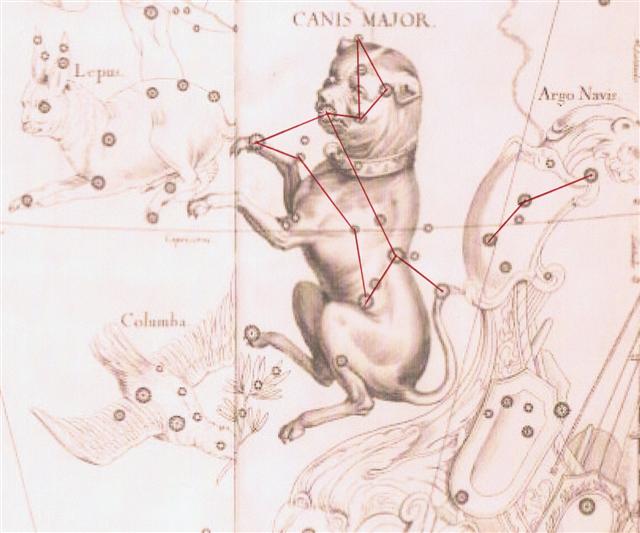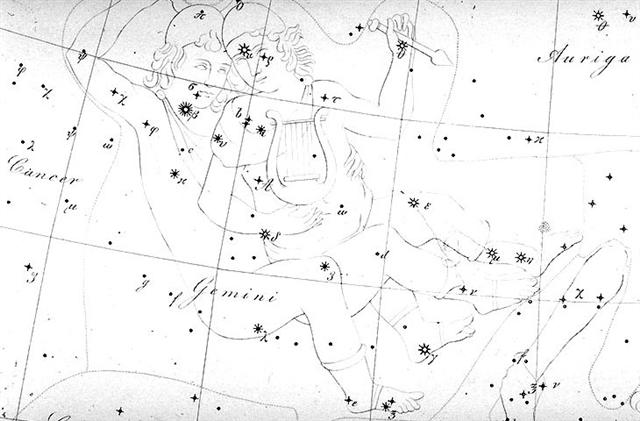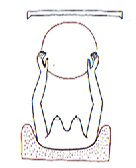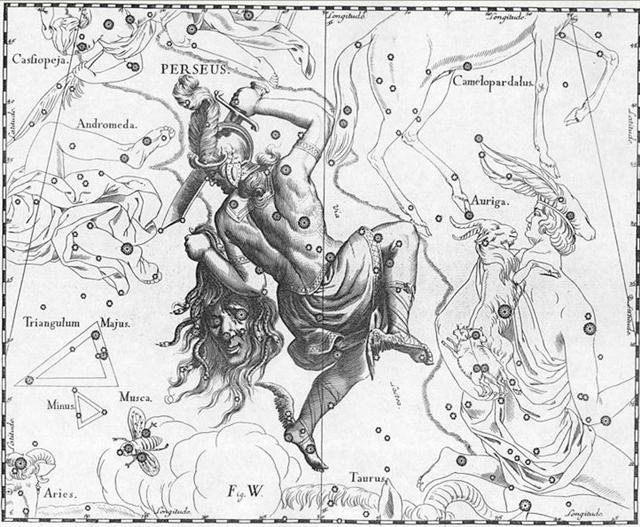39. For reasons of symmetry I counted 121 (= 11 * 11 as in May 1) days ahead from Canopus (*95) respectively from Sirius (*101) and reached Cb1-7 (Mira) and Cb1-13 (35 Arietis):
And then I added 6 more to the position of Cb1-13 (Sirius + 121 days = the Head of the Fly) in order to reach day *107 (Wezen, at the spine of Canis Major) + 121 = *228:
Although Wasat (Middle) was at the navel of Pollux and Cb1-21 was at glyph 413 = 14 * 29½ the C text pushes on to Cb1-23, we can see, the place where the hands of the mother are holding her newborn high.
88 (at Cb1-23 - as in the arithmetic progression 1, 2 , 3, ... in contrast to the geometric progression 1, 2, 4, ...) was clearly a significant number for Homeros, whose myths could have originated not far from the time of Bharani (around 41 * 71 - 1842 = 1070 BC). ... Yes, for he was a monstrous thing and fashioned marvelously, nor was he like to any man that lives by bread, but like a wooded peak of the towering hills, which stands out apart and alone from others. Odysseus, choosing twelve men, the best of the company, left his ships at shore and sallied to the vast cave. It was found stocked abundantly with cheeses, flocks of lambs and kids penned apart, milk pails, bowls of whey; and when the company had entered and was sitting to wait, expecting hospitality, the owner came in, shepherding his flocks. He bore a grievous weight of dry wood, which he cast down with a din inside the cave, so that in fear all fled to hide. Lifting a huge doorstone, such as two and twenty good four-wheeled wains could not have raised from the ground, he set this against the mouth of the cave, sat down, milked his ewes and goats, and beneath each placed her young, after which he kindled a fire and spied his guests ... 88 (= 22 * 4) could be memorized as 3-29 ("March 29) connecting to 329 (in yet another style) for November 25 (the position for Antares): ... As to the G text I have guessed heliacal Antares (Rehua) was arriving in Tagaroa Uri 15 by counting from 0h at the time of Bharani, i.e. 41 precessional days earlier than the time of rongorongo:
... The canoes of Ava Rei Pua and of Hotu were seen near the (off-shore) islets. On the fifteenth day of the month of October (tangaroa uri) the canoe of Hotu and the canoe of Ava Rei Pua landed. On the fifteenth day of the month of October (tangaroa uri), Nonoma left the house during the night to urinate outside. At this point Ira called out to Nonoma, 'Look at the canoe!' Nonoma ran, he quickly went to Te Hikinga Heru (a ravine in the side of the crater Rano Kau) and looked around. There he saw the double canoe way out near the (offshore) islets, and the two (hulls of the canoe) were lashed together. He ran and returned to the front of the house. He arrived and called into the house: 'Hey you! This canoe has arrived during the night without our noticing it!' Ira asked Nonoma, 'Where is the canoe, which you say is lying out there (in the water)?' Nonoma's voice came back: 'It is out there (in the water) close to the (offshore) islets! There it lies, and the two (hulls) are lashed together.' The four of them (corrected for 'the six of them') went out and picked up leaves (on branches) to give signals. They picked them up, went and arrived at Te Hikinga and saw the canoe. Raparenga got up, picked up the leaves, took them in his hands, and waved, waved, waved, waved ... But the star which all remembered as announcing the northern spring equinox (84) was Algol, rising 4 nights before 88, i.e. in 3-25 ("March 25). No wonder the Pope changed the date for spring equinox to 3-21.)
... In the sky, Perseus lies next to his beloved Andromeda. Nearby are her parents Cepheus and Cassiopeia, as well as the monster, Cetus, to which she was sacrificed. Pegasus, the winged horse, completes the tableau. Perseus himself is shown holding the Gorgon’s head. The star that Ptolemy called ‘the bright one in the Gorgon head’ is Beta Persei, named Algol from the Arabic ra’s al-ghul meaning the demon’s head. (As an aside, al-ghul is also the origin of our word alcohol - quite literally ‘the demon drink’. Algol is the type of star known as an eclipsing binary, consisting of two close stars that orbit each other, in this case every 2.9 days ...
The pair Ga7-11--12 can be interpreted as the offspring (tama-iti, little child) generated from the egg-case of a shark - referring to Antares as mago (the shark).
... Mermaid's purses (also known as Devil's Purses) are the egg cases of skates, sharks and rays. They are among the common objects which are washed up by the sea. Because they are lightweight, they are often found at the furthest point of the high tide. The eggcases that wash up on beaches are usually empty, the young fish having already hatched out ...
... And so they waited there in the darkness at the place where the sun rises. At length the day dawned, a chilly grey at first, then flaming red. And the sun came up from his pit, suspecting nothing. His fire spread over the mountains, and the sea was all glittering. He was there, the great sun himself, to be seen by the brothers more closely than any man had ever seen him. He rose out of the pit until his head was through the noose, and then his shoulders. Then Maui shouted, and the ropes were pulled, the noose ran taut. The huge and flaming creature struggled and threshed, and leapt this way and that, and the noose jerked up and down and back and forth; but the more the captive struggled, the more tightly it held. Then out rushed Maui with his enchanted weapon, and beat the sun about the head, and beat his face most cruelly. The sun screamed out, and groaned and shrieked, and Maui struck him savage blows, until the sun was begging him for mercy. The brothers held the ropes tight, as they had been told, and held on for a long time yet. Then at last when Maui gave the signal they let him go, and the ropes came loose, and the sun crept slowly and feebly on his course that day, and has done ever since. Hence the days are longer than they formerly were. It was during this struggle with the sun that his second name was learned by man. At the height of his agony the sun cried out: 'Why am I treated by you in this way? Do you know what it is you are doing. O you men? Why do you wish to kill Tama nui te ra?' This was his name, meaning Great Son of the Day, which was never known before ...
... Accordingly the Explorers could have reached Easter Island at heliacal Castor. Manuscript E (p. 17): ... The Explorers left Hiva in the 25th day of the first month (Vaitu Nui) and arrived in Maro 1. Probably these dates referred to the time when Bharani was at 0h, and then "April 25 would have been when the Sun reached Cursa (β Eridani) and "June 1 where Castor rose with the Sun:
|
||||||||||||||||||||||||||||||||||||||||||||||||||||||||||||||||||||||||||||||||||||||||||||||||||||||||||||||||||||||||||||||||||||||||||||||||||||||||||||||||||||||||||||||||||||||||||||||||||||||||||||||||||||||||||||||||||||||||||||||||||||||||||||||||||||||||||||||||||||||||||||||||||||||||||||||||||||||||||||||||||||||||||||||||||||||||||||||||||||||||||||||||||||||||||||||||||||||||||||||||||||||||||||||||||||||||||||||||||||||||||||||||||||||||||||||||||||



































